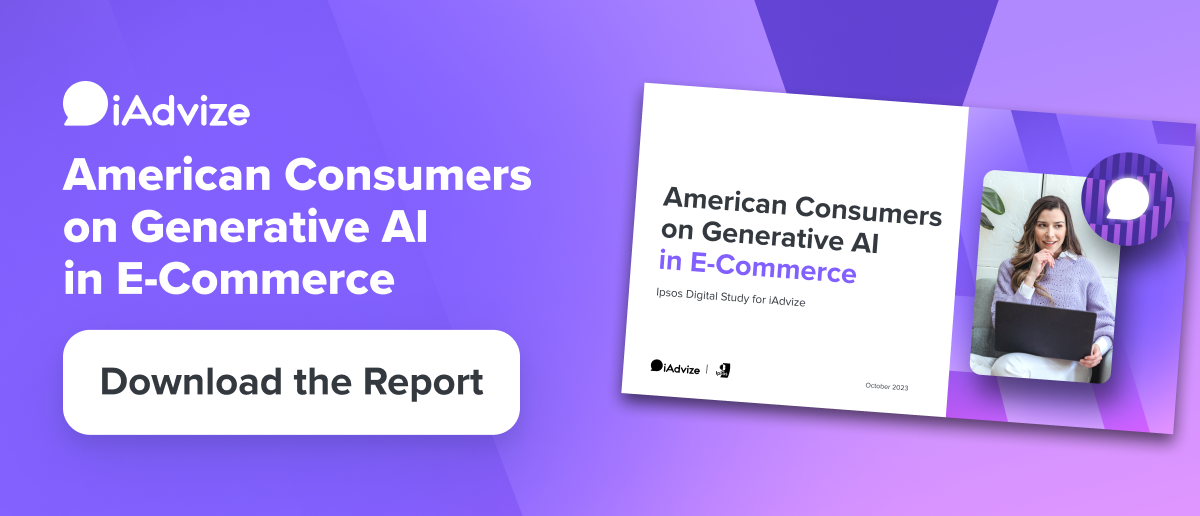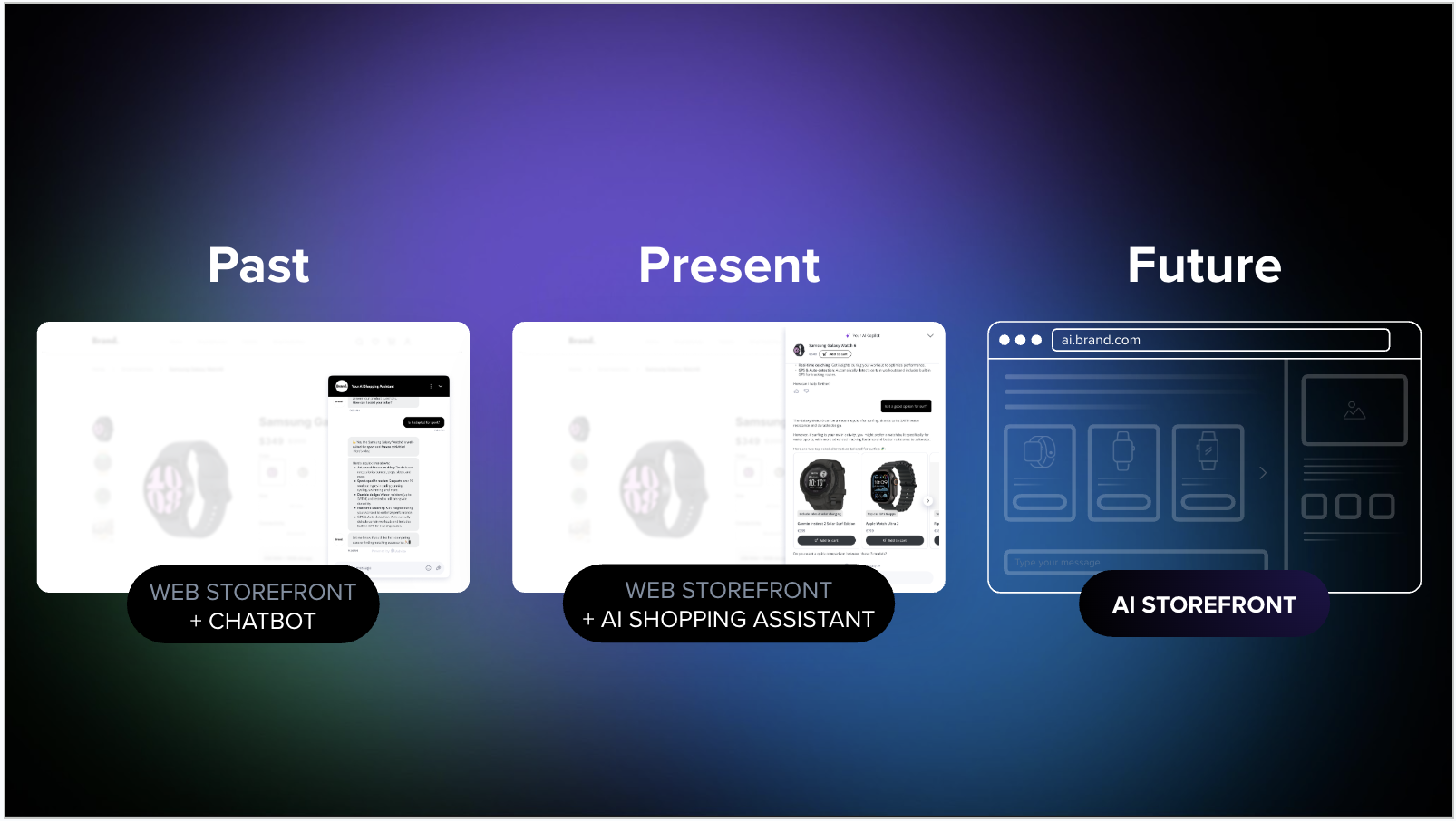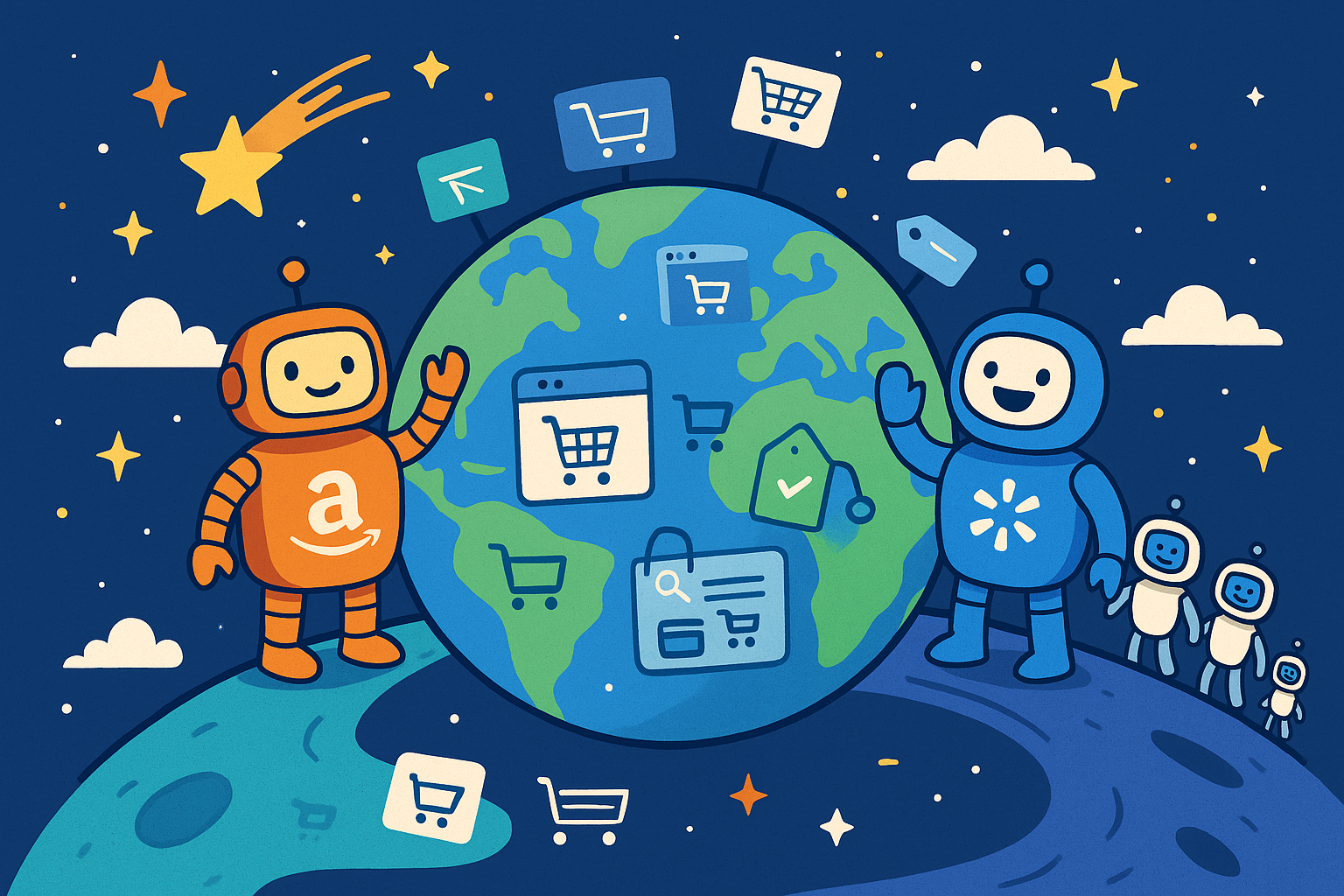Key Trends in AI That E-commerce Leaders Need to Know
iAdvize

The latest advancements in artificial intelligence are reshaping the e-commerce landscape, enabling brands to interact with customers in new ways, and tailor purchasing journeys more closely to their needs and behaviors. This shift represents a significant revolution in online shopping, characterized not just by technological innovation, but also by the democratization of this technology. While deep learning models like ChatGPT or Bard build on existing foundations, consumer applications from organizations like OpenAI or Microsoft have broadened their reach, making these tools accessible to a wider audience.
Luc Julia, a renowned AI specialist and co-creator of Apple's Siri, observed that generative AI's adoption rate is unprecedented. This surge has prompted hundreds of brands to integrate it into their e-commerce platform and initiate organizational transformations to stay relevant. In this article, we dive deeper into these changes and explore the future of e-commerce and artificial intelligence’s role in this evolving domain as forecasted by Thomas Husson, VP and Principal Analyst at Forrester.
More of a visual learner? Watch the full replay of our webinar with Forrester, Generative AI in Action: Decoding Ecommerce Trends & Results.
The State of Conversational Commerce Today
How AI Is Changing the Conversation
With the advent of technologies like ChatGPT, Midjourney, and other consumer-grade AIs, generative AI has become a ubiquitous topic. Its significance is likened to that of the internet, mobile technology, and social media—a comparison drawn by Forrester experts who have monitored technology trends and their impacts on organizations for over four decades. The consensus among researchers is clear: AI is set to profoundly influence businesses both in the immediate future and in the long term.
One of its key breakthroughs is granting machines the capability to comprehend and mimic natural language with unprecedented accuracy. Thomas Husson, VP & Principal Analyst at Forrester, analogizes this feature to "giving the Rosetta Stone to machines," highlighting the newfound ability of AI to engage in and understand the subtleties of human conversational logic like never before.
There’s been a pivotal shift in how brands communicate with consumers, enabling more empathetic and real-time interactions, and despite the seeming paradox, generative AI is instrumental in making digital interactions more human-like.
The ability to respond with the appropriate tone, tailored to specific audiences and contexts, underscores the heightened understanding of generative AI algorithms today that make more personalized and engaging consumer interactions possible in the digital space.
"We've been discussing the concept of ‘conversational’ for a while, but now we’re seeing technology has caught up, enabling us to make it a reality."
Thomas Husson, VP & Principal Analyst at Forrester
The Revival & Upgrade of Conversational Assistants
Forrester’s recent Consumer Energy Index highlights that many conversational experiences still lead to frustration and a fragmented customer experience. Current chatbot experiences are often at best subpar. They give the illusion of authentic conversation at first, but fall flat due to limited user options and ineffective communication.
According to a study we conducted with Ipsos, 4 out of 5 American shoppers see the benefit of using chatbots, and this figure rises to 91% among 18-34 year olds. The report also reveals this AI tool’s influence on consumers’ decision to purchase. When a chatbot provides a satisfactory answer, 65% of respondents report that they followed through on a purchase. This is the gap that generative AI-powered customer solutions help bridge—the crucial point in a consumers’ shopping journey where these tools can help save the sale.
With advanced generative AI models, Forrester predicts we’ll begin to see a significant improvement in the quality of chatbots we come across in the online shopping experience; Ones that can expertly interpret and handle requests, understand much more complex contexts, refine the details of an inquiry, and respond faster. As people begin to excel at AI-related skills like prompting, and integrating data and tone requirements, conversations will only continue to gain fluidity.
Transformation of the Online Customer Experience
Redesigning Digital Customer Journeys
Over the long term, Forrester predicts that AI's influence on e-commerce is expected to reduce the cognitive burden on consumers. E-commerce has traditionally required consumers to navigate through digital platforms in ways that aren't always intuitive. For instance, mandatory account creation before making a purchase is a notable hurdle that doesn't apply to the brick-and-mortar store experience.
Generative AI is set to revolutionize this by crafting seamless experiences that preemptively address consumers' needs based on the context and their emotions at a given moment.
"We'll need to deconstruct websites and mobile apps to re-orchestrate fragments of experience in context and natural language."
Thomas Husson, VP & Principal Analyst at Forrester
Although seemingly a bit futuristic, Husson argues it's already becoming a reality. A prime example of this is the way a notification from Uber delivers the contextual information you need without having to interact with the app.
The importance of customer experience is escalating and now more than ever a priority for top management and investors alike. The link between customer experience and key business metrics—such as cost, margin, customer retention, upsell, and cross-sell opportunities—is becoming increasingly apparent, highlighting the critical role of customer experience in overall business success.
The Development of Customer-Facing Use Cases
Generative AI was first adopted internally to improve project workflows and enhance creativity across companies ranging from startups to large corporations. Once this began to prove beneficial, with early adopters seeing substantial time and cost saving results and boosts in productivity, its role in organizations drastically expanded.
By 2024, companies are looking towards much broader deployments of this technology as a way to enhance performance in a pre-sales capacity. Now, businesses recognize that AI tools can give them a competitive edge, especially in the e-commerce sector.
An example of this is Sideshow, which pioneered the use of generative AI for the specialty manufacturing industry to enhance their digital conversational strategy using our Trusted Generative AI solution, iAdvize Copilot™, on all their product pages.
The Sideshow example is inspirational, yet raises important questions for other organizations aiming to replicate this success. Effectively leveraging generative AI to enhance customer engagement is a largely subjective task that looks different across businesses. There are several challenges that brands must navigate to join this evolving trend.
4 Generative AI Implementation Challenges & Solutions
1. Response Reliability
Artificial intelligence that’s meant for the general public isn’t regulated for enterprise use and will prioritize producing a response over accuracy. This means that they have a tendency to ‘hallucinate’, or invent answers that aren’t true.
To address this, it's important that the tools you integrate have features that enable you to establish control rules. This can look like feeding it only brand data sources, giving it specific instructions, and applying transfer rules that allow humans to take over when it can’t respond to a site visitor.
2. Potential Consequences of AI Use
Widespread generative artificial intelligence use introduces broader questions, including topics surrounding ethics, bias, privacy concerns, and copyright issues. These challenges will require close monitoring in the years ahead.
To safeguard your business against potential misuses and threats, it's essential to ensure that the tools you use adhere to recognized data privacy standards like ISO 27001, GDPR, CCPA, and the European AI Act. Compliant solutions do already exist, offering a secure way to leverage this technology.
3. Data Concerns
Although Large Language Models (LLMs) are already pre-trained on general data sets, generative artificial intelligence requires consistent internal data governance. When interacting with site users, it's critical to always deliver responses that accurately reflect the website’s products and services, while maintaining a high level of personalization.
Consequently, brands are increasingly searching for a conversational commerce platform that can integrate with their first-party data sources—such as product catalogs and FAQs—to provide accurate, relevant responses within their unique brand context.
4. Shifting Job Opportunities
New challenges in e-commerce require upskilling across many roles in order to ensure that, as a professional, you’re at the forefront of this technological revolution, rather than left behind by it.
Collaboration with artificial intelligence is becoming increasingly integral to our daily work lives. Developers are already harnessing it to enhance coding efficiency, and similar applications are extending to many other fields, such as customer service. Tools like chatbots, or copilots, have become commonplace, aiding us in a broad spectrum of tasks.
This shift is set to transform the job landscape significantly. According to the World Economic Forum's 2023 Future of Jobs report, technological advancements and macroeconomic trends will alter the nature of jobs and required skills over the next five years. The report predicts that 23% of jobs globally will evolve within this timeframe, impacting 45 economies and 673 million workers. While 69 million new jobs are expected to be created, 83 million are likely to be phased out, resulting in a net loss of 14 million jobs, or a 2% reduction in current global employment.
In light of these changes, establishing trust in our capacity to collaborate with machines will become paramount, beginning as early as the job interview process. For existing employees, especially in the retail sector, there will be a pressing need for training initiatives to familiarize them with new technologies and features. Quickly gaining an understanding of AI use and integrating it into everyday responsibilities will be crucial for fostering relationships within organizations and with customers going forward.
E-commerce is Paving the Way for Generative AI Adoption
As the number of use cases grows, it's clear that not every organization has access to the same level of resources as giants like Amazon, Google, or Microsoft. Despite this, e-commerce emerges as a significant force in leveraging AI to solve the major customer experience challenges within the sector. This includes deploying copilots to enhance customer service agents' response quality and streamline the buying journey by eliminating unnecessary intermediary steps.
Industries in the digital space leading the way in adoption include fashion, home & garden, consumer electronics, and sports & outdoors. These sectors, in particular, are poised for substantial e-commerce growth in the coming years.
According to Forrester's Europe-5 Online Retail Forecast report, fashion will represent 37% of all digital sales by 2028, while home & furniture will jump from 28% to 36% by then.
"We expect generative AI to improve the customer experience, making it more fluid and bringing new opportunities for conversational commerce."
Thomas Husson, VP & Principal Analyst at Forrester
Explore the results of e-commerce businesses’ implementations of generative AI and get Forrester’s major 2024 e-commerce trend predictions in the replay of our webinar: Generative AI in Action: Decoding E-commerce Trends & Results.

.png)
.png)





